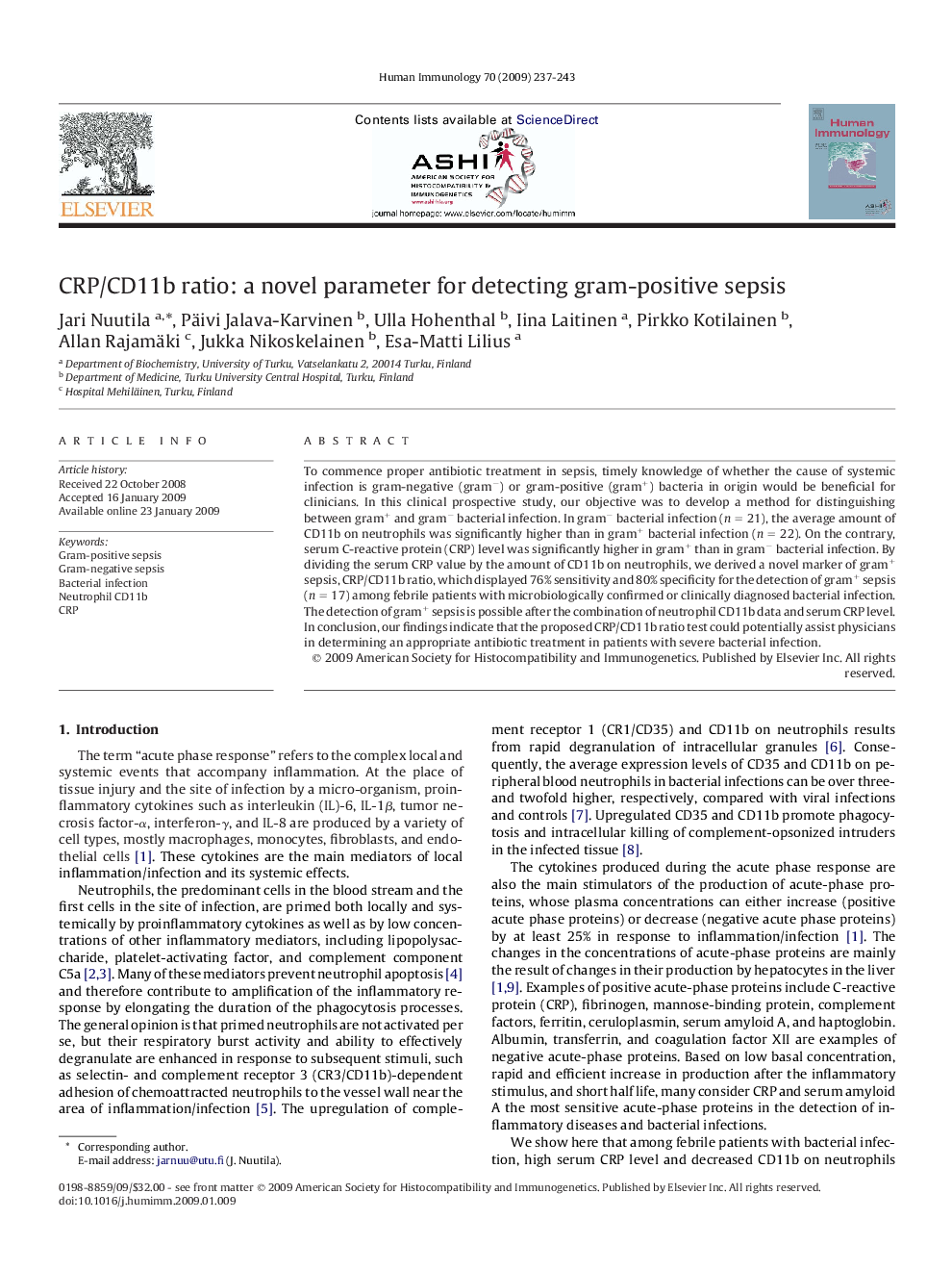| Article ID | Journal | Published Year | Pages | File Type |
|---|---|---|---|---|
| 3351401 | Human Immunology | 2009 | 7 Pages |
Abstract
To commence proper antibiotic treatment in sepsis, timely knowledge of whether the cause of systemic infection is gram-negative (gramâ) or gram-positive (gram+) bacteria in origin would be beneficial for clinicians. In this clinical prospective study, our objective was to develop a method for distinguishing between gram+ and gramâ bacterial infection. In gramâ bacterial infection (n = 21), the average amount of CD11b on neutrophils was significantly higher than in gram+ bacterial infection (n = 22). On the contrary, serum C-reactive protein (CRP) level was significantly higher in gram+ than in gramâ bacterial infection. By dividing the serum CRP value by the amount of CD11b on neutrophils, we derived a novel marker of gram+ sepsis, CRP/CD11b ratio, which displayed 76% sensitivity and 80% specificity for the detection of gram+ sepsis (n = 17) among febrile patients with microbiologically confirmed or clinically diagnosed bacterial infection. The detection of gram+ sepsis is possible after the combination of neutrophil CD11b data and serum CRP level. In conclusion, our findings indicate that the proposed CRP/CD11b ratio test could potentially assist physicians in determining an appropriate antibiotic treatment in patients with severe bacterial infection.
Related Topics
Life Sciences
Immunology and Microbiology
Immunology
Authors
Jari Nuutila, Päivi Jalava-Karvinen, Ulla Hohenthal, Iina Laitinen, Pirkko Kotilainen, Allan Rajamäki, Jukka Nikoskelainen, Esa-Matti Lilius,
